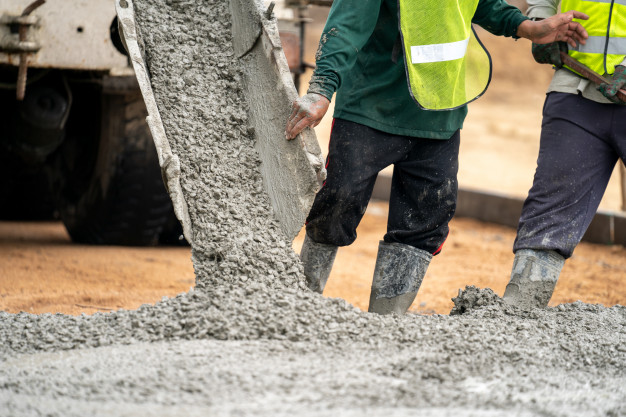Reinforced concrete mixing
Before mixing concrete materials, it must be ensured that the sand and gravel are clean, and accordingly it must be cleaned of the organic matter stuck to them by shaking them with the sand and washing them with water before use because the presence of large proportions of clay causes corrosion of the iron in it and weakens its strength. The raw materials of concrete are generally mixed in one of the following two ways:
- Manual mixing.
- Mechanical mixing.
Manual Reinforced concrete mixing
After cleaning the sand and gravel, it is stored in a suitable place on the site. The concrete is manually mixed using a shovel to mix small quantities of concrete, but the manual mixing commonly used for large quantities of concrete is placed in the volume of 2 kale boxes of gravel, then the size of a kayl box of sand, and the number of cement bags required is added to them. Then these materials are mixed dry 3 times on a flat, deaf pallet of wooden planks or any similar material using the trowel with tensioners, and after the mixture becomes homogeneous, the water is gradually added to the amount required for mixing and the stirring and mixing continues 3 more times until the color and texture of the mixture are homogeneous.
Mechanical Reinforced concrete mixing
Concrete is mechanically mixed in the required proportions in mixers of suitable capacity proportional to their size at the rate of transportation and pouring of the process. Mixers are used at the work site and the number of mixers is proportional to the type and nature of work and the quantities of concrete required. For equipped wagons.
Central Reinforced concrete mixing
Concrete is mixed and prepared in the concrete processing plant, and its location is often near the project site, then it is transported to the site by vehicles equipped for that. Conveyor during transportation to prevent concrete material from separating or sticking.
Mixing methods during transportation
The dry concrete components are mixed in the central mixer as before, except that the concrete is mixed with water in the mixer cart either during transportation to the work site or directly before pouring. One of the benefits of this method is that it gives more time for transportation, but its disadvantage is that the capacity of the mixing cart is usually about 4/3 the capacity of the car transporting ready-mix concrete because mixing concrete components with water reduces its size and the speed of concrete stirring during transportation must be ranging Between 2-6 rpm to maintain the consistency of the concrete.
Source: wikipedia.org/wiki/Reinforced_concrete
Read More: buildineg.com/public/blog/what-is-a-concrete-jacketing-of-column/

